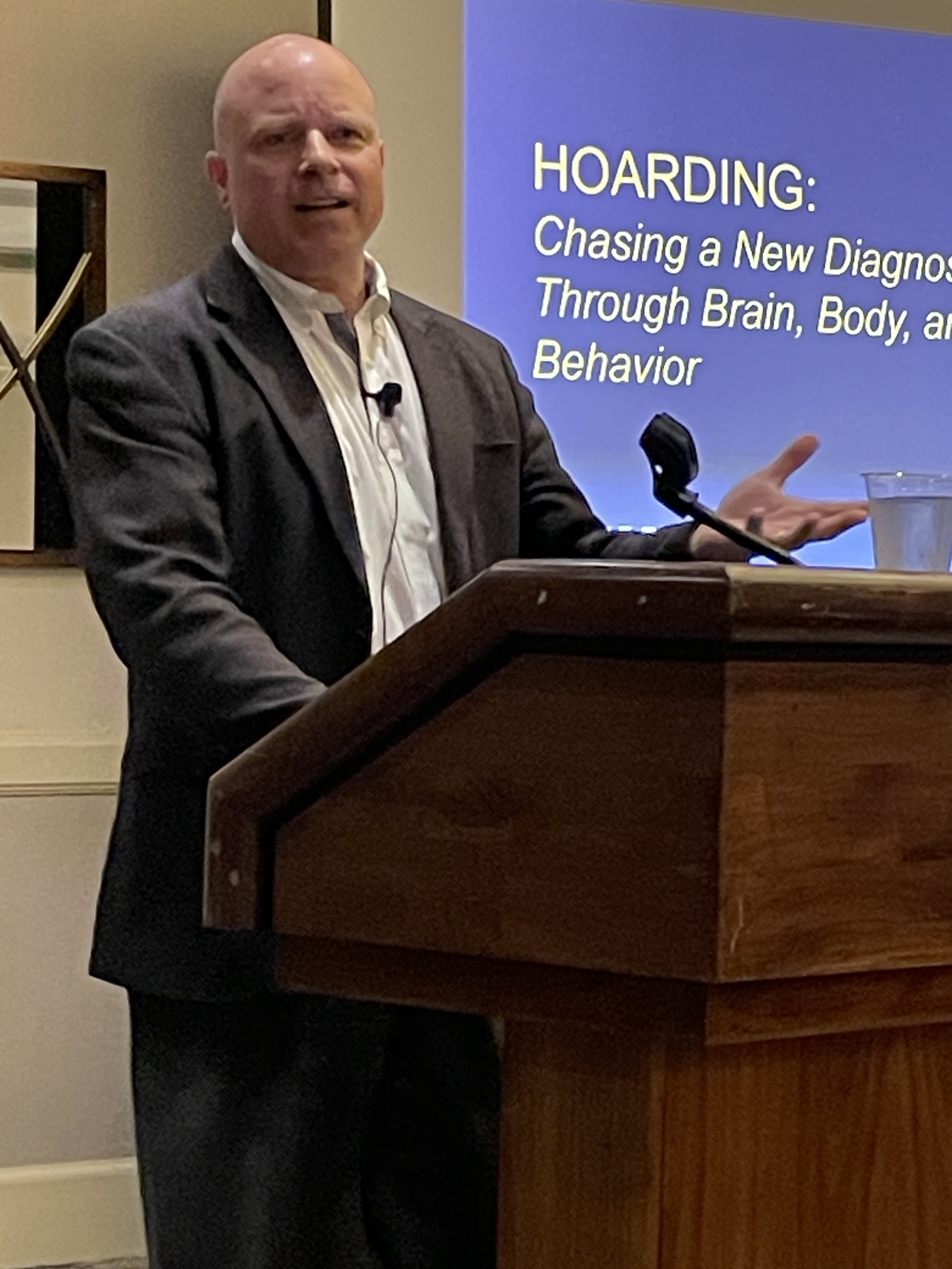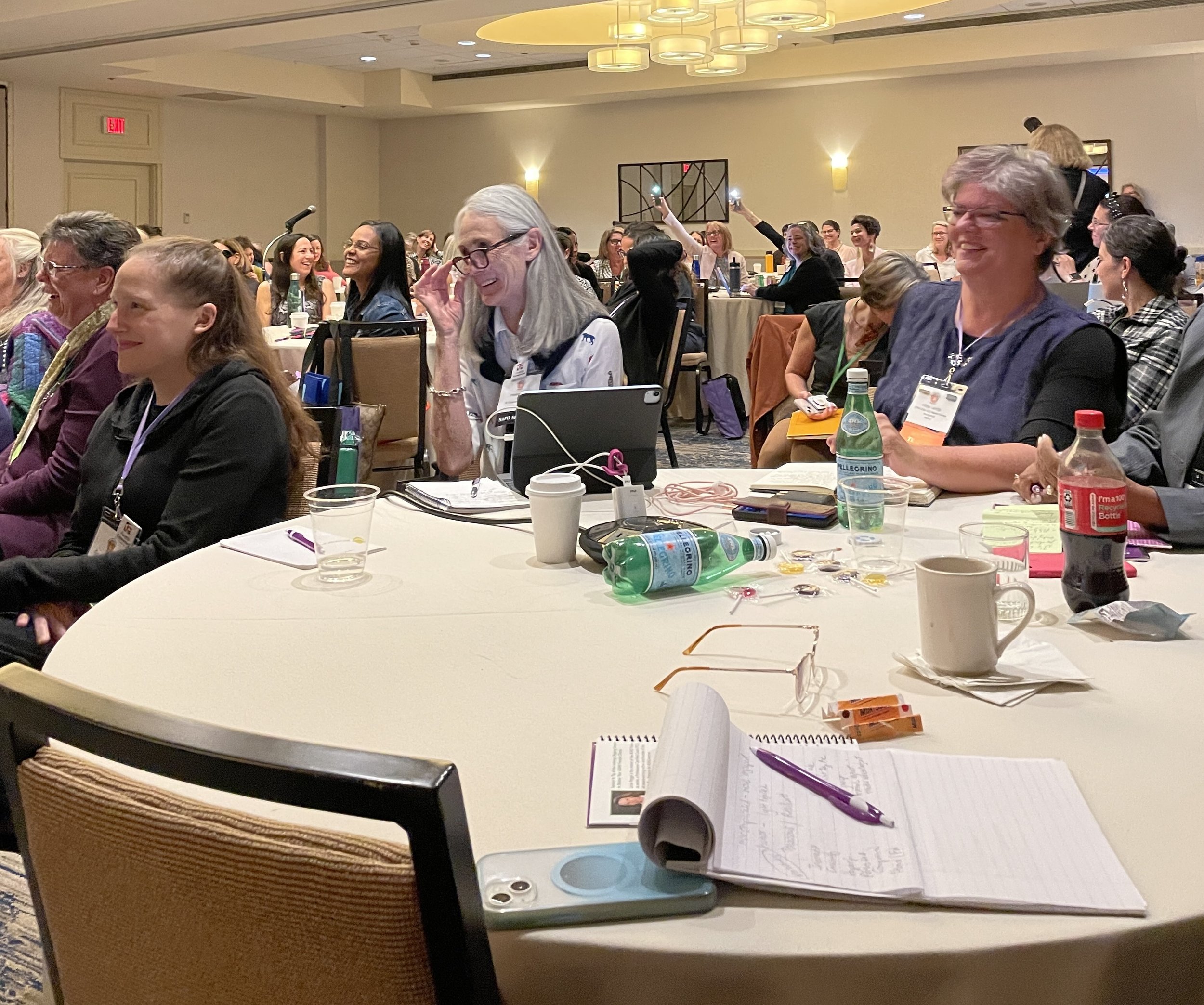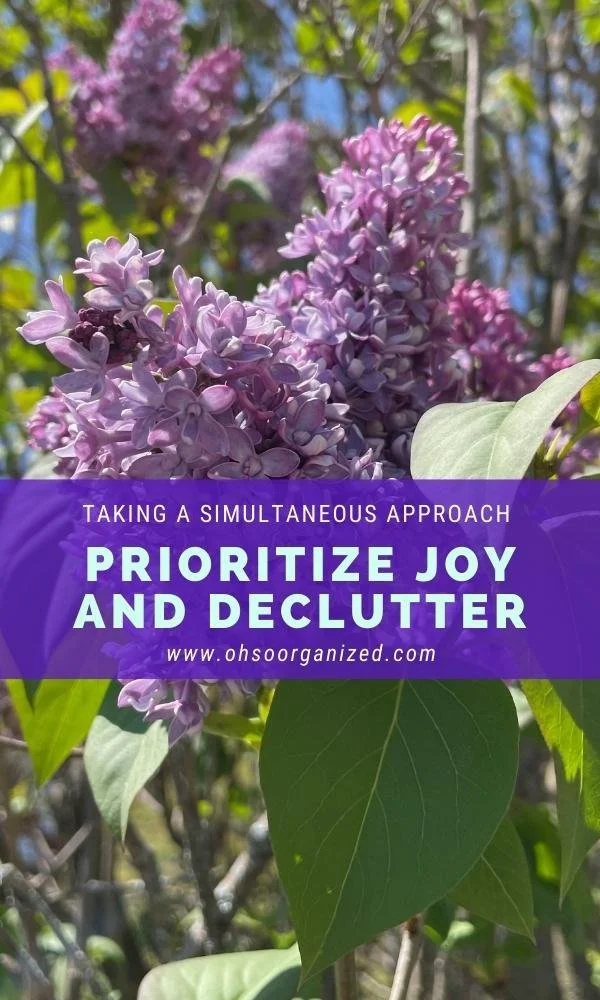What happens when you have so many possibilities? Do you feel overwhelmed? Do you get stuck? Are you unable to make decisions or take action? It’s terrific to have options and know there are lots of possibilities. However, when the scope is too large, the choices can feel more like a burden than an inspiration.
Last week, I attended the ICD conference near Boston with over 100 organizing colleagues from around the globe. It felt amazing to be together in person again, be with my colleagues, and meet new friends. We learned from incredible experts during seven 90-minute sessions. It was wonderful, intense, and emotional. There were sessions about dementia, hoarding, neurodiversity, ADHD, anxiety, time management, and mindset.
By the end, my brain felt drippy, like a sponge that couldn’t absorb more liquid. Of course, I want to share everything I learned with you. As I sat to write this, I got overwhelmed by the options and possibilities. So, guess what? I’m dialing it back from my 16 pages of notes to share information from five of the sessions. I hope the ideas open up something for you- a new perspective, reframe, or possibility.
5 Powerful Ways Learning Encourages Possibilities
1. DEMENTIA | “I am who I am. I’m just different.”
Beth Nolan, PhD, the Director of Research and Policy for Teepa Snow’s Positive Approach to Care™ (PAC), said there are 100+ causes and types of dementia. One way to help is to understand while dementia “robs” the person of many things, they still have skills and strengths. Identify and focus on those.
My mom was diagnosed with vascular dementia in 2013 and passed away in 2021. While many of her abilities were compromised over those eight years, I was always inspired by what remained, like her ability to make music, play the piano, sing, and express love. She was still my mom, just different.
2. HOARDING | “Hoarding isn’t just a house problem. It’s a mental health problem.”
Dr. David Tolin, the Founder and Director of the Anxiety Disorders Center at the Institute for Living and Adjunct Professor of Psychiatry at Yale University School of Medicine, said Hoarding Disorder became a standalone diagnosis in the 2013 DSM-5. The hallmarks of the disorder are having difficulty discarding or parting with possessions and having a visible manifestation of clutter build up with the home no longer useable for its intended purpose.
For people with Hoarding Disorder, “Saving happens because tossing is distressing, not liberating or freeing.”
Dr. Tolin shared these statistics:
The drive to acquire and save affects 2-5% of the population worldwide.
Hoarding Disorder is twice as common as Obsessive Compulsive Disorder (OCD).
Hoarding Disorder begins at a young age (6-16) and worsens with age. It does not get better on its own.
While Cognitive Behavioral Therapy (CBT) is one of the most successful treatment methods for Hoarding Disorder, it is not 100% effective. Through continuing research, Dr. Tolin is committed to better understanding the psychology and biology of hoarding behavior and discovering ways to boost CBT’s efficacy.
“Saving happens because tossing is distressing, not liberating or freeing.”
3. NEURODIVERSITY | “The value of life can’t and shouldn’t be based on productivity. It leaves a lot of people out.”
Devon Price, PhD, a social psychologist, professor, researcher, author, and proud Autistic person, was diagnosed with autism after finishing his PhD and experiencing “autistic burnout.”
Some of autism’s distinguishing characteristics include sensory input challenges, such as loud sounds and eye contact, which are painful. Processing is slower, but it’s a strength because they catch small details and are more detail-oriented. However, because the world moves fast, it doesn’t support how they process, so they feel more disabled.
Devon prefers identity-first language- “autistic person,” “autistic,” and “disabled person.” He said to avoid “differently abled” or “special needs.”
4. ADHD | “Successful ADHD women look successful on the outside and feel inadequate on the inside.”
Linda Roggli, PCC, creator of the ADHD Palooza series, a Professional Certified Coach, and author and founder of the A-D-Diva Network for ADHD women 40-and-better said she has an “ADHD brain.”
The ADHD inattentive type is most prevalent in women. Some distinguishing factors include a busy brain, low energy, high worry, inability to concentrate, being distracted by one’s thoughts, daydreaming, difficulty following through and prioritizing, misplacing things, being talkative, impatient, having low self-esteem, not having great a working memory, making impulsive decisions, and feeling restless.
Roggli said understanding the impact of hormones on women with ADHD is essential. The brain works better with more estrogen. Estrogen affects dopamine. The ADHD brain lacks dopamine. Menopause decreases estrogen by 50% and keeps getting lower.
Most women with ADHD have comorbid conditions or “sidecars.” They include:
30-40% - 1 Depressive episode
50% - Learning differences
10-20% Bipolar
30% OCD
Up to 50% - Addictions
5. ANXIETY | “The more you care, the more you worry. Anxiety means I care. You can’t teach people not to care. You can only teach how to manage anxiety.”
Dr. Alicia Clark, a psychologist and author of Hack Your Anxiety, said 40% of people experience persistent stress, and only 36% get help. She also said:
Women suffer from anxiety 1.6 times more than men.
Post-pandemic, anxiety and depression increased by three times.
The visual distraction of clutter increases cognitive overload and decreases working memory.
Anxiety shows up in the “emotional landscape” of the organizing work we do with our clients. These can appear as fear of change, failure, facing emotional memory of things, letting go, and making mistakes.
Dr. Clark described four forms of anxiety – Whisper, Chatter, Nagging, and Yelling. She explained they are not all bad. Chatter anxiety is referred to as “good stress.” You can reframe anxiety and recognize that it drives motivation. She suggests using “anxiety to change what is in your control,” focusing on progress, reframing setbacks as part of the growth process, and getting adequate sleep.
Possibilities open up when we understand more about our psychological, emotional, and biological states. I was deeply moved by the presenters, the stories and insights they shared, and how they connected to many of my clients. It is a privilege to be part of their journey. I have the utmost respect and admiration for my clients’ determination and how they face their challenges.
What possibilities appeared for you? Did you discover any surprises? I’d love to hear your thoughts. I invite you to join the conversation.























